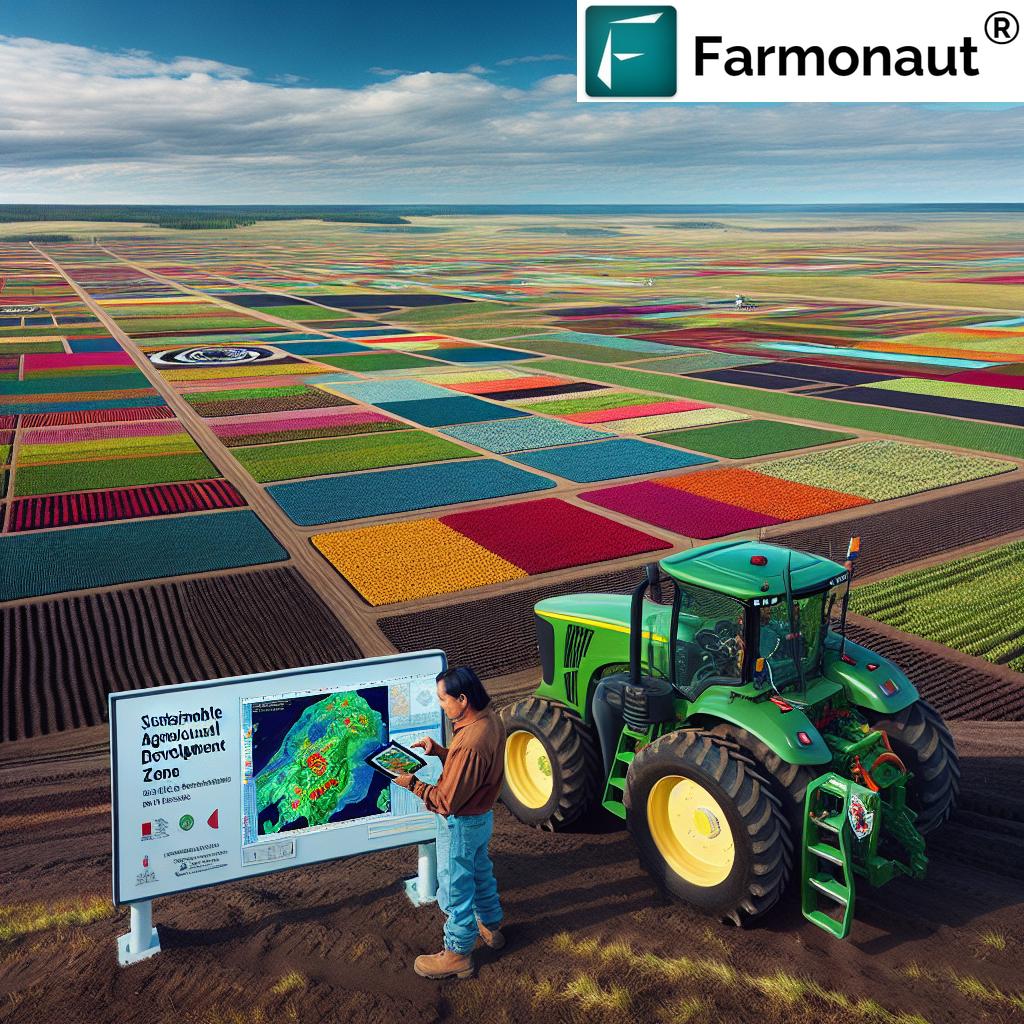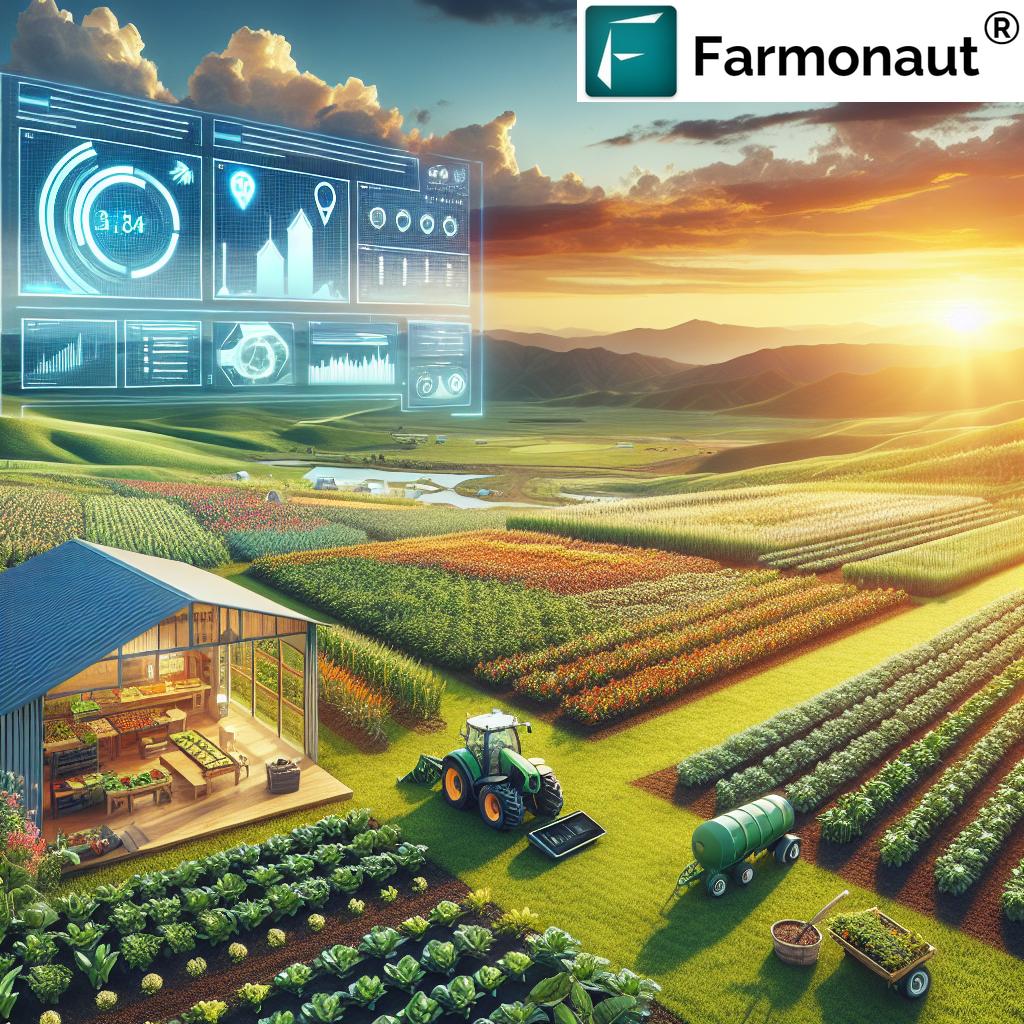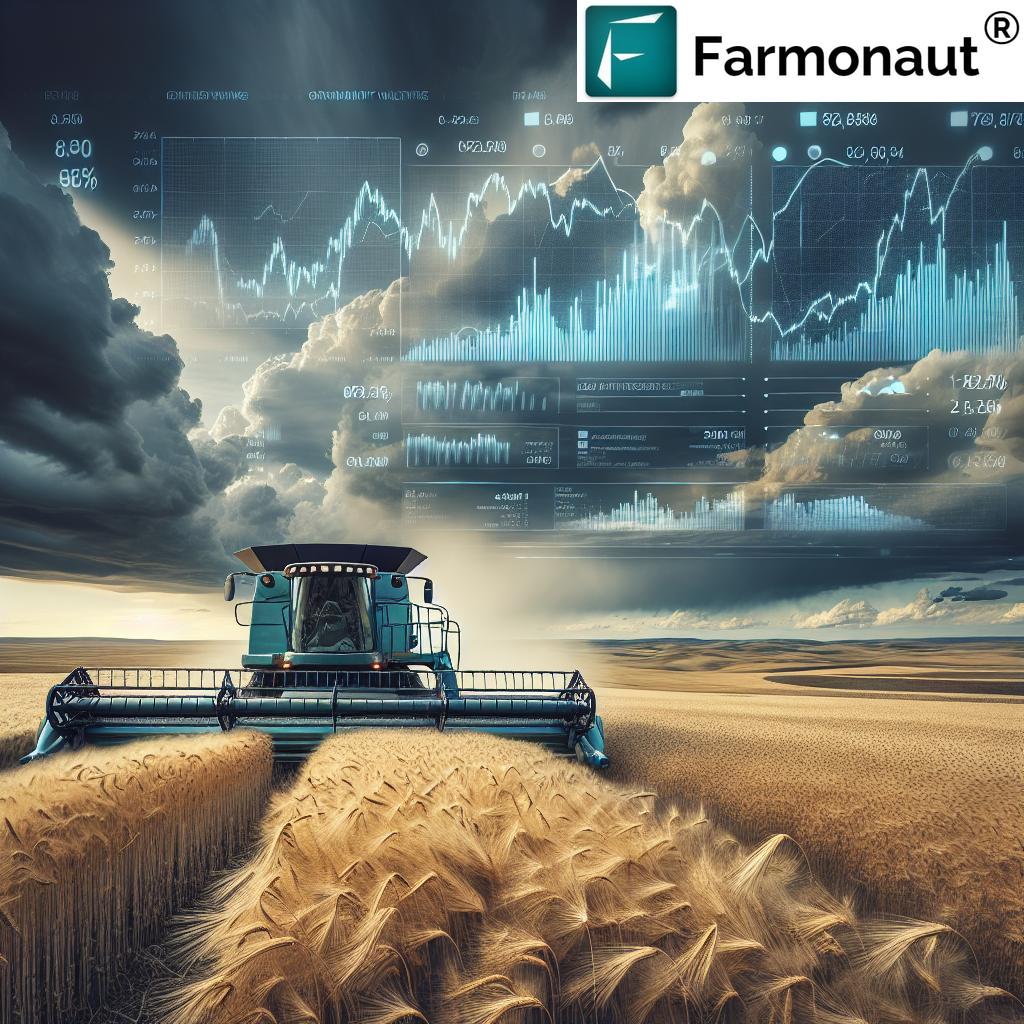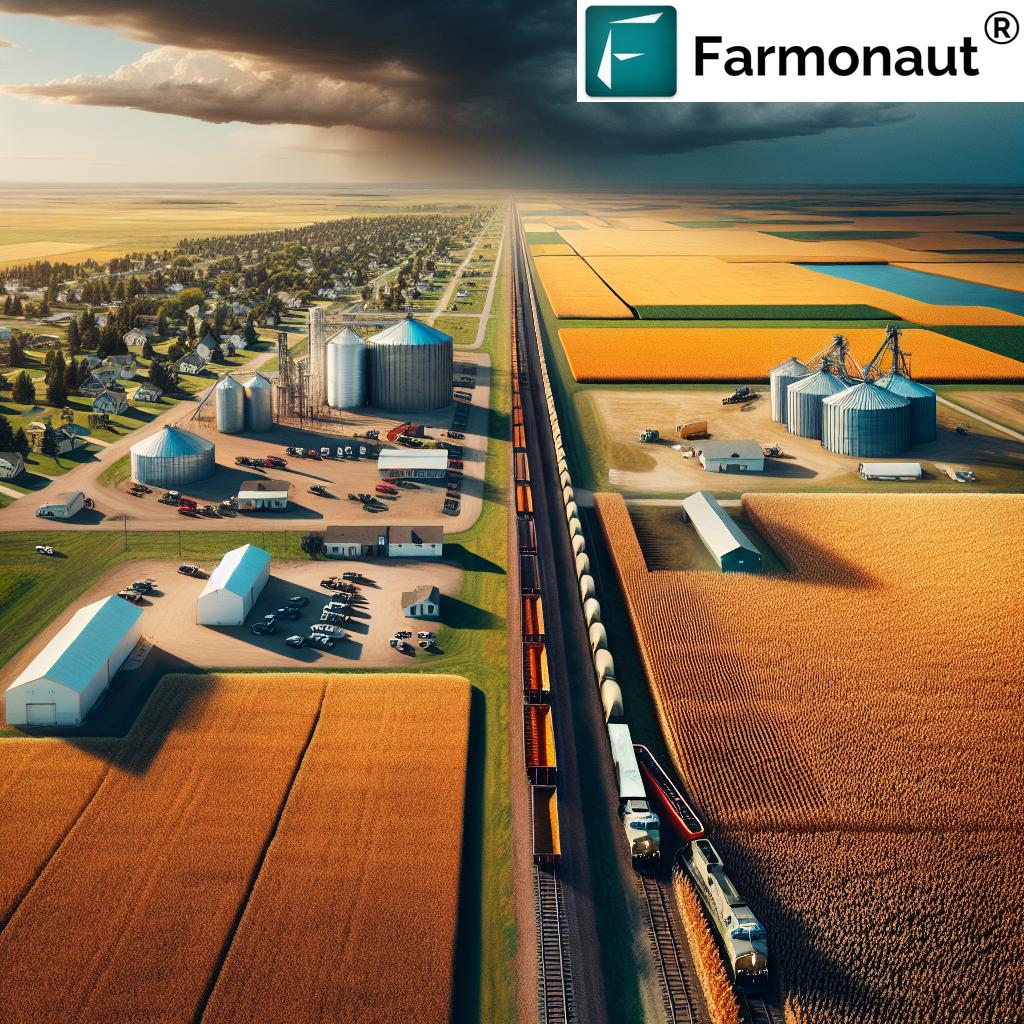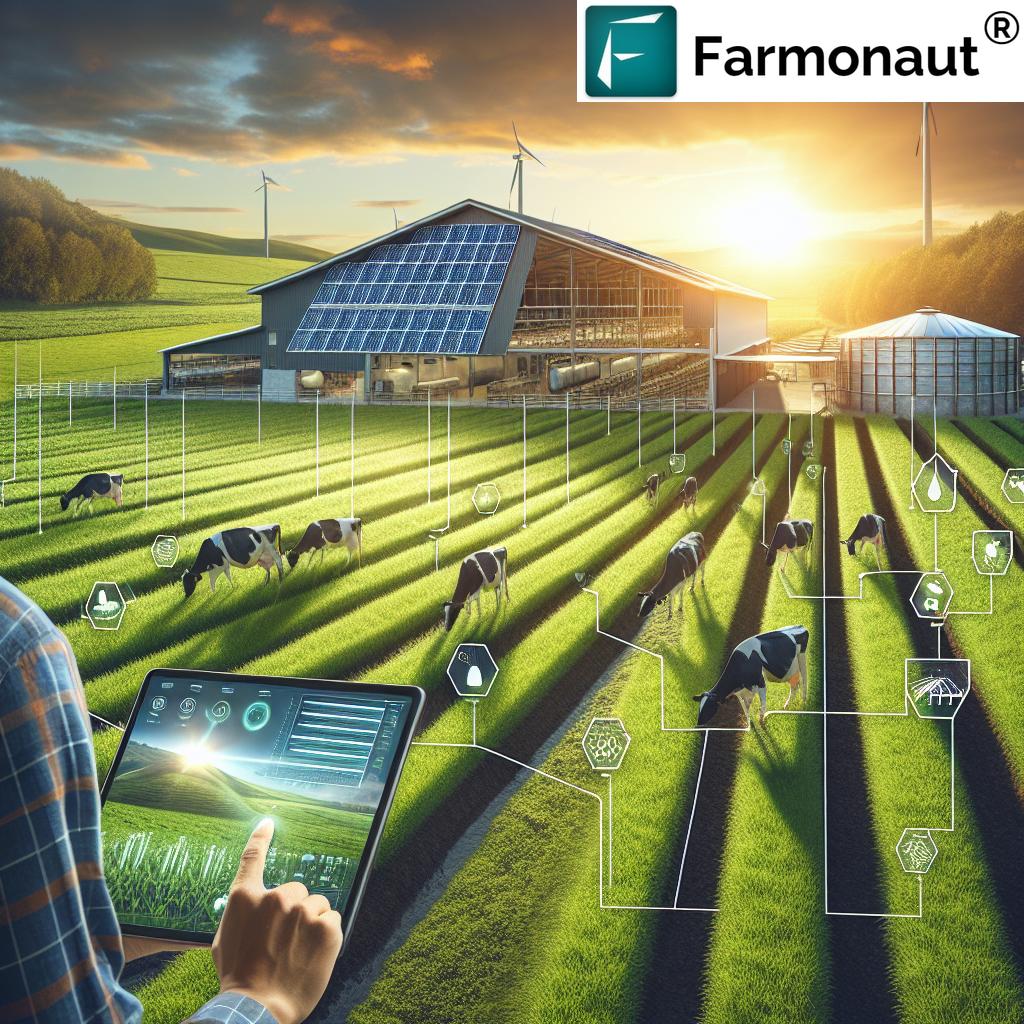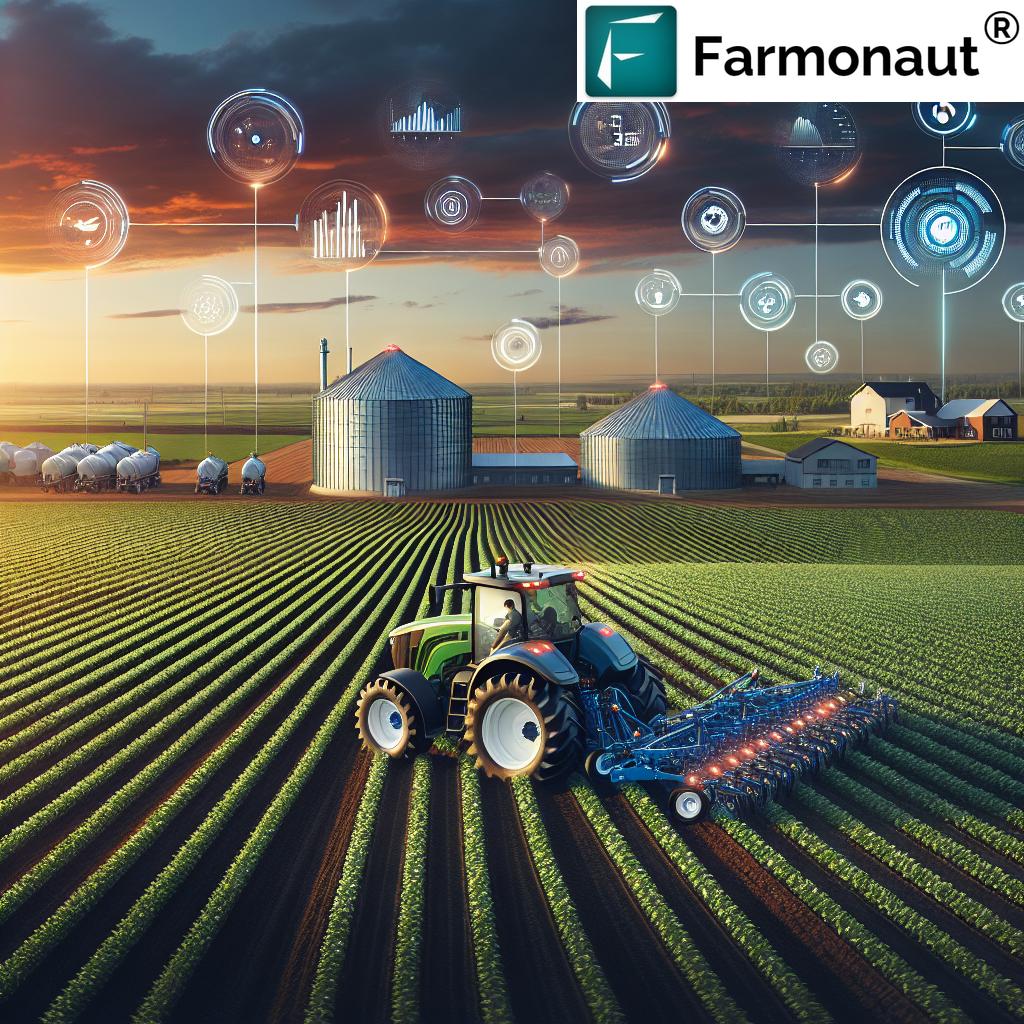Canadian Grain Farmers Seek Carbon Tax Relief: Balancing Climate Action and Agricultural Sustainability
In the heart of Canada’s prairie provinces, a pivotal debate is unfolding that could reshape the future of agriculture and climate policy. As we delve into this complex issue, we’ll explore how grain farmers are grappling with the challenges posed by carbon taxes, particularly in relation to the crucial process of grain drying. This blog post aims to shed light on the intricate balance between environmental stewardship and agricultural sustainability, examining the implications for farmers, policymakers, and consumers alike.
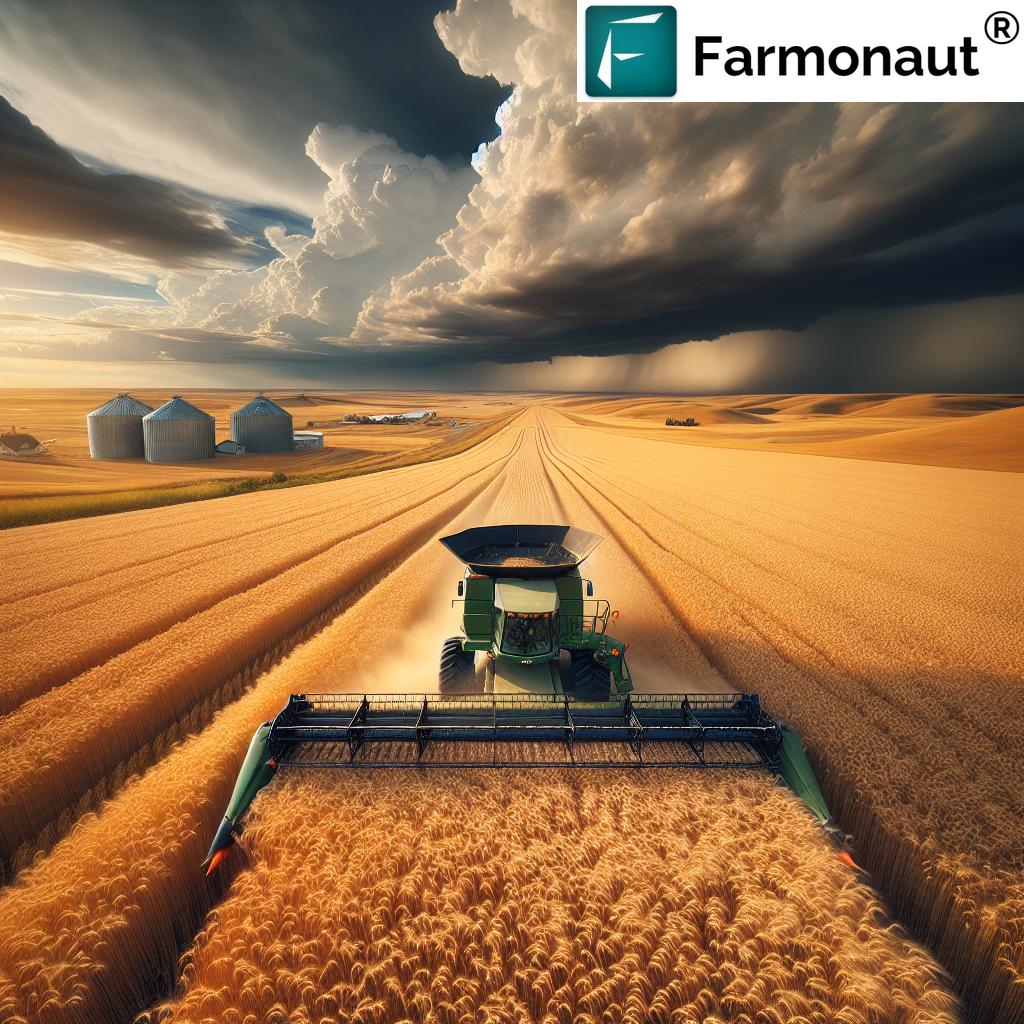
“Canadian grain farmers spend up to 30% of their operating costs on energy for grain drying in challenging harvest years.”
The Carbon Tax Conundrum in Canadian Agriculture
The carbon tax on agriculture has become a hot-button issue, particularly for grain farmers across Saskatchewan, Alberta, and Manitoba. These producers find themselves at the intersection of two critical concerns: the need to address climate change and the imperative to maintain economically viable farming operations. The carbon tax, designed to reduce greenhouse gas emissions, has inadvertently placed a significant financial burden on farmers who rely heavily on energy-intensive processes like grain drying.
Grain drying is not a luxury but a necessity for many Canadian farmers. In years with wet harvests, drying is crucial to prevent spoilage and maintain crop quality. However, the process requires substantial energy, often derived from fossil fuels, making it a target for carbon taxation. This has led to a growing call from the agricultural community for carbon tax relief, specifically for grain drying operations.
The Impact of Weather Challenges on Grain Farming
Climate change has brought about increasingly unpredictable weather patterns, presenting formidable challenges for farmers. Extreme weather events, such as unseasonable rains or early frosts, can significantly impact harvest timing and quality. These climate-related hurdles often necessitate more frequent and intensive grain drying, further exacerbating the financial strain on farmers.
- Increased frequency of wet harvests
- Greater risk of crop loss due to weather variability
- Extended drying periods to ensure grain quality
As we navigate these challenges, it’s crucial to consider innovative solutions that can help farmers adapt to changing climate conditions while minimizing their carbon footprint. This is where advanced agricultural technology comes into play.
Farmonaut, a leading agricultural technology company, offers satellite-based farm management solutions that can assist farmers in optimizing their crop management practices. By leveraging real-time data and AI-driven insights, farmers can make more informed decisions about planting, harvesting, and resource allocation, potentially reducing the need for extensive grain drying.
To explore how Farmonaut can help optimize your farming operations, check out their web application:
The Economic Implications of Carbon Tax on Grain Drying
“Carbon tax on grain drying can increase a typical farm’s annual expenses by $8,000 to $10,000, impacting profitability.”
The financial impact of the carbon tax on grain drying is substantial and multifaceted. For many farmers, especially those operating on tight margins, these additional costs can mean the difference between profitability and loss. Let’s break down the economic implications:
- Increased Operating Costs: The carbon tax directly increases the cost of fuel used in grain drying, which can represent a significant portion of a farm’s operating expenses.
- Reduced Competitiveness: Canadian farmers competing in global markets may find themselves at a disadvantage compared to producers in countries without similar carbon pricing mechanisms.
- Investment Challenges: The additional financial burden may limit farmers’ ability to invest in new, more efficient technologies or sustainable farming practices.
- Price Pressure: To offset increased costs, farmers may need to raise crop prices, potentially affecting consumers and the entire agricultural value chain.
These economic pressures have led to calls for policy adjustments and the exploration of alternative solutions to balance environmental goals with agricultural sustainability.
Proposed Solutions and Policy Considerations
As the debate over carbon tax relief for grain drying continues, various solutions and policy adjustments have been proposed:
- Exemptions for Agricultural Activities: Some advocate for specific exemptions from carbon tax for essential agricultural processes like grain drying.
- Tax Rebates or Credits: Implementing a system of rebates or credits for farmers who invest in energy-efficient drying technologies.
- Gradual Implementation: A phased approach to carbon taxation that allows farmers more time to adapt and invest in cleaner technologies.
- Investment in Research and Development: Increased funding for the development of low-emission grain drying technologies.
Policymakers face the challenge of crafting regulations that effectively reduce carbon emissions without unduly burdening the agricultural sector. This requires a delicate balance and ongoing dialogue between government officials, agricultural representatives, and environmental experts.
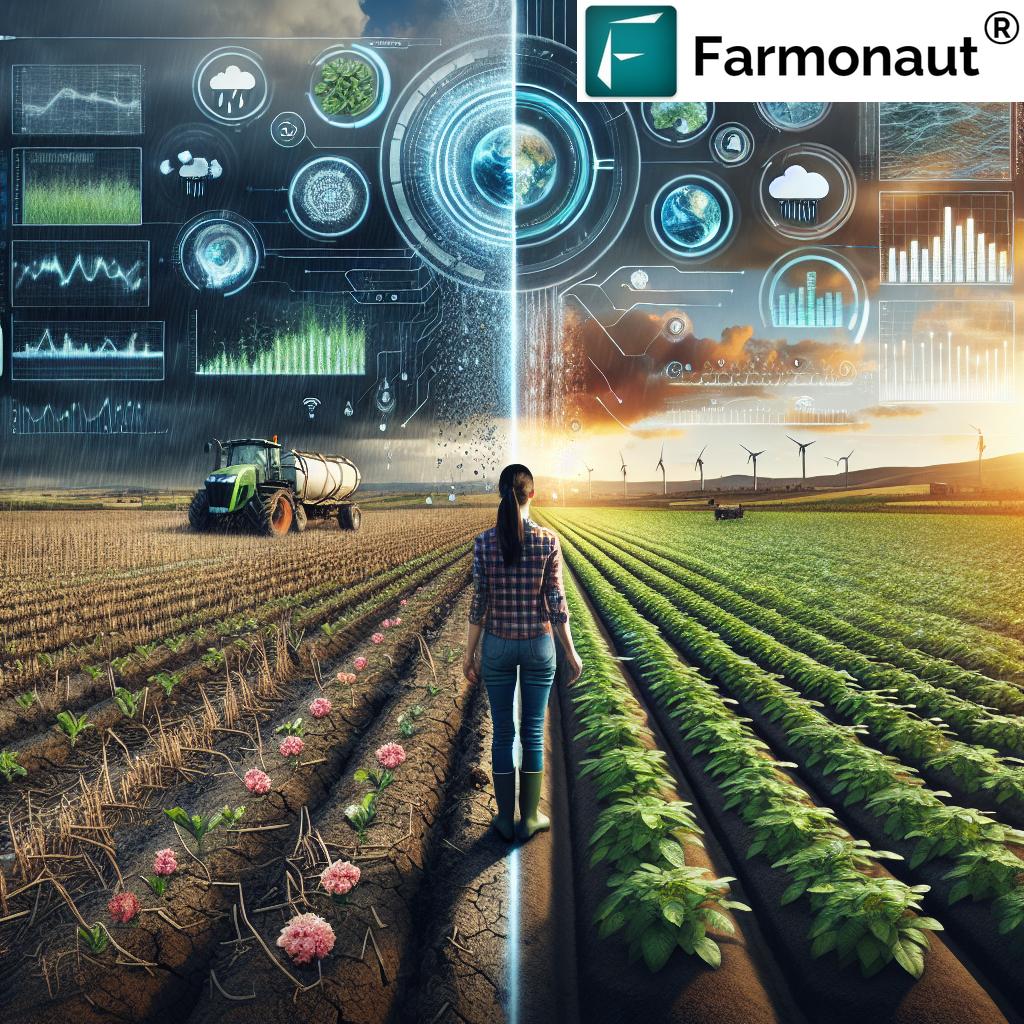
Energy-Efficient Farming Methods and Crop Adaptation Strategies
In response to the challenges posed by carbon taxation and climate change, farmers and researchers are exploring various energy-efficient farming methods and crop adaptation strategies. These approaches aim to reduce carbon emissions while maintaining or improving agricultural productivity:
- Precision Agriculture: Utilizing technology to optimize resource use and reduce waste. Farmonaut’s satellite-based crop monitoring system is an excellent example of how precision agriculture can be implemented effectively.
- Improved Grain Drying Technology: Investing in more efficient drying systems that consume less energy or utilize renewable energy sources.
- Crop Variety Selection: Developing and planting crop varieties that are more resistant to moisture and require less drying.
- Conservation Tillage: Adopting practices that minimize soil disturbance, reducing fuel consumption and improving soil health.
- On-Farm Energy Generation: Implementing renewable energy solutions like solar or biomass to power farm operations, including grain drying.
For farmers looking to implement these strategies, Farmonaut offers valuable tools and insights. Their mobile applications provide easy access to critical farm management data:
The Role of Technology in Sustainable Farming
As we navigate the complexities of climate change and agricultural policy, technology emerges as a crucial ally for farmers. Advanced agritech solutions can help bridge the gap between environmental sustainability and economic viability. Farmonaut’s innovative platform exemplifies how technology can transform farming practices:
- Satellite-Based Crop Health Monitoring: Real-time insights into crop health allow for timely interventions, potentially reducing the need for energy-intensive practices.
- AI-Driven Advisory Systems: Personalized recommendations help farmers make informed decisions about resource management and crop planning.
- Weather Forecasting: Accurate predictions enable better harvest timing, potentially reducing reliance on grain drying.
- Resource Optimization: Data-driven insights help minimize waste and improve overall farm efficiency.
By leveraging these technological advancements, farmers can not only adapt to changing environmental conditions but also potentially reduce their carbon footprint without sacrificing productivity.
The Grain Market Dynamics and Carbon Tax
The impact of carbon tax policies extends beyond individual farms, influencing the broader grain market dynamics both domestically and globally. Understanding these market forces is crucial for farmers, policymakers, and consumers alike:
- Price Volatility: Carbon taxes can contribute to increased price volatility in grain markets as producers adjust to new cost structures.
- International Competitiveness: Canadian grain farmers may face challenges in global markets if their production costs rise significantly due to carbon taxation.
- Supply Chain Effects: Higher production costs could ripple through the supply chain, potentially affecting food prices for consumers.
- Market Adaptation: Over time, markets may adjust to new pricing realities, potentially leading to shifts in crop selection and farming practices.
For farmers navigating these complex market dynamics, access to real-time data and market insights is invaluable. Farmonaut’s API offers developers and businesses the ability to integrate crucial agricultural data into their systems:
Provincial Perspectives: Saskatchewan, Alberta, and Manitoba
The impact of carbon tax on grain drying varies across Canada’s prairie provinces, each facing unique challenges and opportunities:
Saskatchewan
As a major grain producer, Saskatchewan has been vocal about the need for carbon tax relief. The province has seen significant increases in grain drying costs, particularly in years with wet harvests. Farmers in Saskatchewan are exploring alternative energy sources and pushing for policy changes to mitigate the impact of carbon taxation.
Alberta
Alberta’s agricultural sector has also felt the pressure of carbon taxes on grain drying. The province has implemented its own carbon pricing system, which includes some provisions for agricultural producers. However, many farmers argue that these measures don’t go far enough in addressing the unique challenges faced by the grain industry.
Manitoba
Manitoba’s grain farmers have echoed concerns about the impact of carbon taxes on their operations. The province has been exploring ways to support farmers in transitioning to more energy-efficient practices while balancing environmental goals.
Across all three provinces, there’s a growing recognition of the need for tailored solutions that address both climate concerns and the economic realities of grain farming.
| Province | Estimated Annual Carbon Tax Cost for Average Farm | Grain Drying Energy Consumption (estimated kWh/year) | Potential Carbon Tax Relief (if implemented) | Suggested Energy-Efficient Alternatives |
|---|---|---|---|---|
| Saskatchewan | $12,000 – $15,000 | 200,000 – 250,000 kWh | Up to $8,000 | Solar-powered drying systems, biomass heating |
| Alberta | $10,000 – $13,000 | 180,000 – 220,000 kWh | Up to $7,000 | Natural gas drying, heat recovery systems |
| Manitoba | $8,000 – $11,000 | 150,000 – 200,000 kWh | Up to $6,000 | Geothermal heating, improved insulation techniques |
The Future of Grain Farming and Climate Policy
As we look to the future, it’s clear that the intersection of grain farming and climate policy will continue to evolve. The challenges faced by Canadian grain farmers today are likely to shape agricultural practices and policies for years to come. Key considerations for the future include:
- Technological Advancements: Continued innovation in farming technology, like those offered by Farmonaut, will play a crucial role in helping farmers adapt to changing environmental conditions and policy landscapes.
- Policy Evolution: We can expect ongoing refinement of carbon tax policies to better balance environmental goals with agricultural sustainability.
- Changing Consumer Preferences: Growing awareness of climate issues may influence consumer choices, potentially favoring products from low-emission farming practices.
- Global Market Shifts: International climate agreements and changing trade dynamics will likely impact the competitiveness of Canadian grain in global markets.
As these changes unfold, staying informed and adaptable will be key for farmers, policymakers, and all stakeholders in the agricultural sector.
Conclusion: Striking a Balance for Sustainable Agriculture
The debate surrounding carbon tax relief for grain drying in Canada exemplifies the complex challenges facing modern agriculture. As we’ve explored throughout this article, there’s a delicate balance to be struck between addressing climate change and ensuring the economic viability of farming operations.
Key takeaways include:
- The significant impact of carbon taxes on grain drying costs for Canadian farmers
- The need for policy solutions that address both environmental and economic concerns
- The potential of energy-efficient farming methods and crop adaptation strategies
- The crucial role of technology in navigating these challenges
- The varying perspectives and needs across different prairie provinces
As we move forward, it’s clear that collaboration between farmers, policymakers, researchers, and technology providers will be essential. Solutions like those offered by Farmonaut demonstrate the potential for innovation to bridge the gap between environmental sustainability and agricultural productivity.
By embracing advanced farm management tools, adopting sustainable practices, and engaging in open dialogue about policy solutions, Canadian grain farmers can pave the way for a resilient and environmentally responsible agricultural future.
FAQs
- Q: What is the main concern of Canadian grain farmers regarding carbon tax?
A: The primary concern is the significant increase in operating costs, particularly for grain drying, which is essential for maintaining crop quality in wet harvest conditions. - Q: How does climate change impact grain farming in Canada?
A: Climate change leads to more unpredictable weather patterns, increasing the frequency of wet harvests and the need for grain drying, thus raising costs and complicating farm management. - Q: What are some proposed solutions to balance carbon tax and agricultural sustainability?
A: Proposed solutions include carbon tax exemptions for essential agricultural processes, tax rebates for energy-efficient technologies, and increased investment in research for low-emission farming practices. - Q: How can technology help farmers adapt to carbon tax challenges?
A: Technologies like Farmonaut’s satellite-based crop monitoring and AI-driven advisory systems can help optimize farm operations, potentially reducing energy consumption and associated carbon taxes. - Q: Are there differences in how carbon tax affects grain farmers across different provinces?
A: Yes, the impact varies across provinces like Saskatchewan, Alberta, and Manitoba due to differences in local climate conditions, policy implementations, and the scale of grain production in each region.





